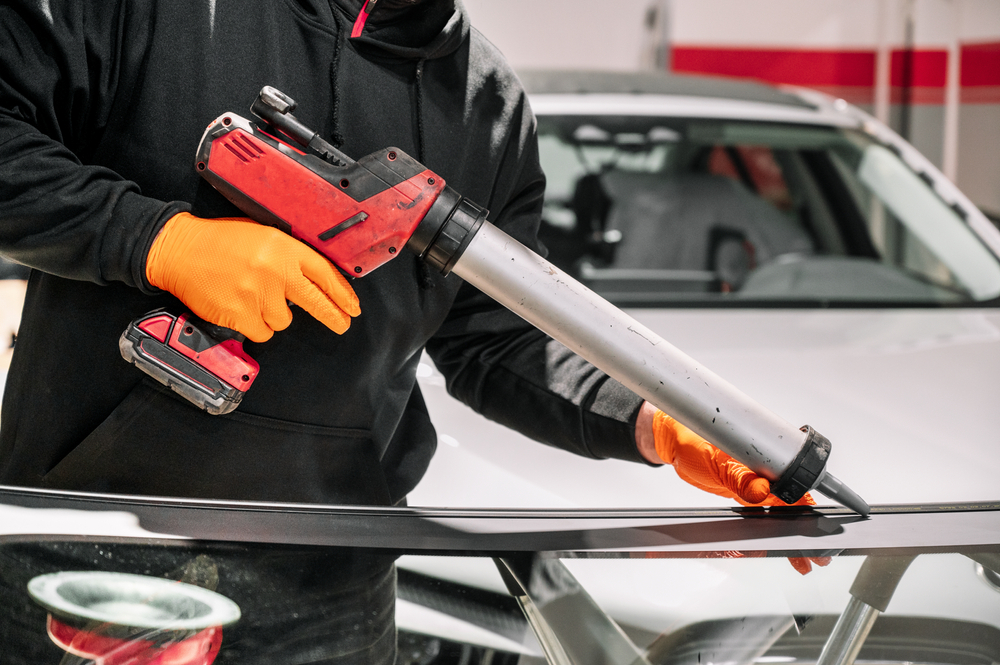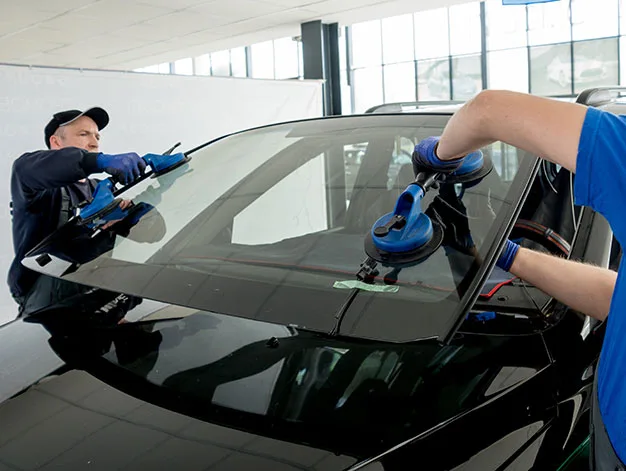The Crucial Role of Adhesives and Bonding Agents in Auto Glass Installation
Your windshield isn't just held by glass – it's about the glue. Proper auto glass adhesives are essential for:
- Safety: Strong bond keeps the windshield in place during a crash
- Durability: Withstands weather, vibration, and impacts
- Quality: Maintains aerodynamics and reduces noise
Choosing the right adhesives and expert installation are a must!
Adhesives and bonding agents ensure auto glass installation safety, durability, and performance. Urethane adhesives offer strong bonds, while silicone-based options provide flexibility. Proper installation and material choice are key. They maintain vehicle integrity and performance.

Understanding Auto Glass Adhesives
Auto glass adhesives are special. They are made to bond car glass to the vehicle's frame. This includes windshields and windows. They are made to withstand extreme conditions. These include temperature changes, vibrations, and impacts. They are crucial for maintaining the windshield's position during collisions. They play a big role in passenger safety.
Types of Adhesives Used in Auto Glass Installation
There are primarily two types of adhesives used in auto glass installations: urethane and silicone-based adhesives. Urethane adhesives are well-known for their strong bonds. They are also very durable. This makes them the top choice for most automotive applications. They resist temperature changes and moisture well. This ensures a lasting, strong bond. Silicone-based adhesives are less common. They are used in specific applications needing flexibility and resistance to extreme temperatures.
The Role of Bonding Agents
Bonding agents are often used with adhesives. They help to bond by preparing surfaces for better adhesion. They are applied to both the glass and the vehicle frame to ensure a stronger, more reliable bond. Bonding agents also prevent rust at the bond. This is crucial for the installation's longevity.
Importance of Proper Installation Techniques
Adhesives and bonding agents work best when you use the right techniques. Proper surface prep is key. You need to apply adhesives correctly and wait for them to cure. These steps are vital for a strong and lasting bond. Technicians must be skilled and know these techniques. They ensure the safety and integrity of the installation.
Safety Considerations
The primary function of a well-bonded car glass is to contribute to the vehicle's structural strength, especially during accidents. A well-installed windshield provides much support to the car's roof. It stops it from collapsing in a rollover. It also ensures that airbags deploy correctly, offering necessary protection to the occupants.
Impact on Vehicle Performance
Beyond safety, the right adhesives and bonding agents impact the vehicle's overall performance. They help keep the car aerodynamic. This helps with fuel efficiency and stability at high speeds. Additionally, they reduce noise by creating a tight seal. This seal minimizes wind noise.
Choosing the Right Materials
Selecting the appropriate adhesive and bonding agent is crucial. Vehicle manufacturers often specify the type of adhesive to be used for their models. You must follow these specs. They are needed to work with the vehicle's design and safety features.
The Environmental Aspect
Modern adhesives and bonding agents are also formulated with environmental considerations in mind. Many products today are designed to be environmentally friendly. They have reduced volatile organic compound (VOC) emissions. This reduces pollution in the automotive repair industry.
Conclusion
In summary, using the right adhesives and bonding agents is key. They are very important in installing auto glass. They are fundamental to ensuring the vehicle's safety, performance, and longevity. As such, automotive pros must know the latest products and installation methods well. They need this knowledge to provide the best service to their clients.
